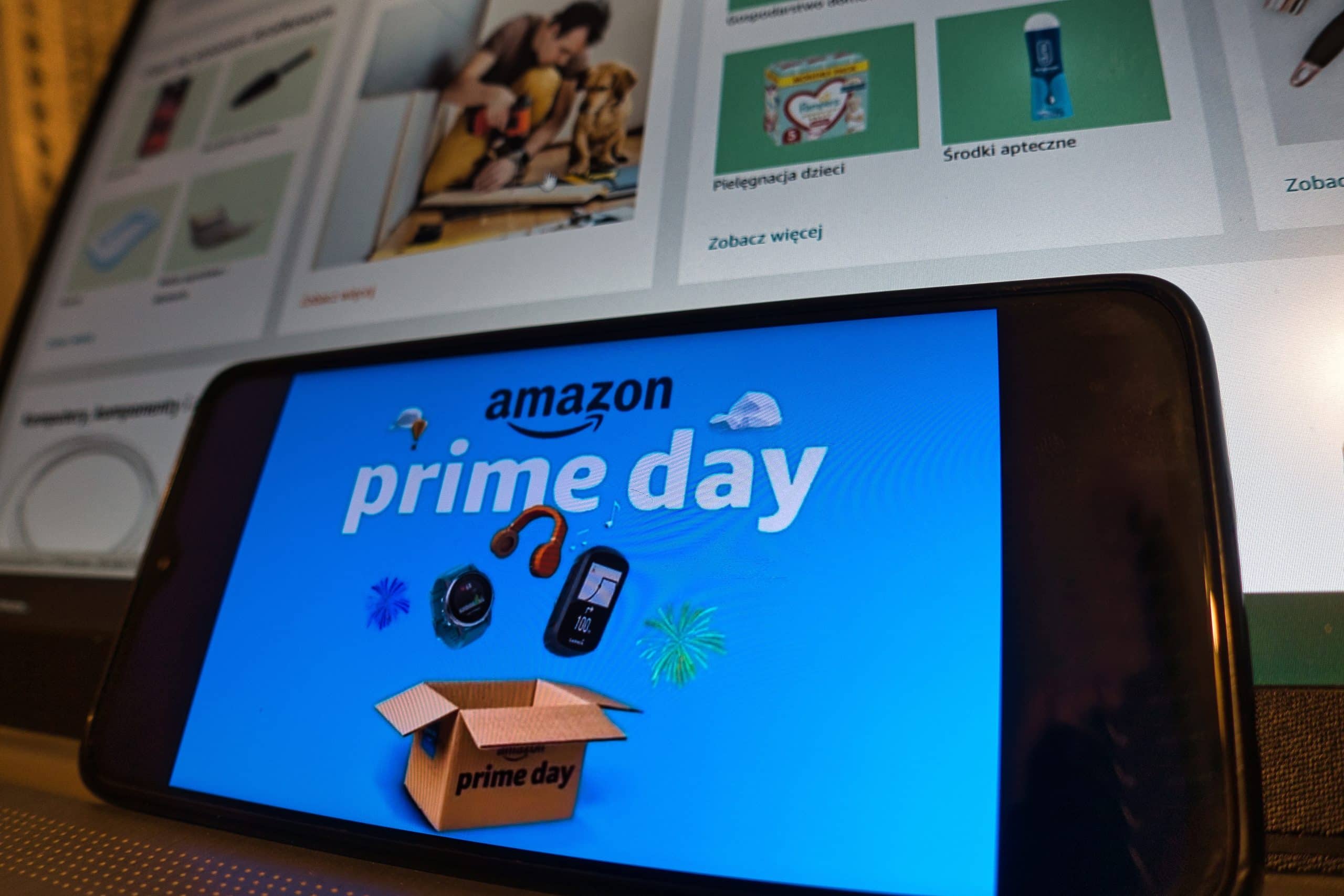Amazon’s Prime Day has become a four-day online event during the height of summer. Millions of shoppers visit the site to find deals on items they’ve been considering, along with browsing to see what’s available at a great price.
For SMBs, this event brings lots of opportunities to gain new customers and increase sales quickly. Last year, Prime members around the world bought more than ever before during Prime Day, and independent sellers, most of them small and midsized businesses, sold more than 200 million items.
Prime Day is also fast-paced and competitive. While it has some similarities to Black Friday, marketers have to keep in mind that it’s a more time-sensitive buying journey, and more intent-driven. The funnel is a lot shorter on Prime Day, with research and buying happening in the same session. Here’s how to prepare and strategize to make these days successful, no matter what your budget and resources.
Pre-Prime Day Preparation
Start off strong with smart preparation ahead of the Prime Day event, including figuring out your campaign type, budgeting, A/B testing, audience targeting, and strategic bidding. Above all, make sure to have all your plans lined up in advance of the event. 58% of consumers wait until Prime Day to buy big-ticket items like electronics and home goods — it’s a captive audience, but for a very short period of time, so you want to make sure you’ve nailed all the details to make it easy for shoppers to find and buy what you’re offering, letting you focus on real-time tweaks as needed during the event itself. Also, make sure you have enough inventory, that your content is ready, and you’re advertising the right products.
Here’s what else to consider as you’re putting your plan together.
Campaign Types
With multiple options and a huge potential audience, consider carefully which campaigns you’ll build and run for Prime Day. SMB marketers don’t always have massive resources, so it’s important to be smart about the placements you choose, and craft relevant messaging. In addition, make sure to diversify the channel mix for Prime Day campaigns: Place the right ads on the right channel based on what you know about your audience and prospects, and what your Prime Day goals are. You can create separate campaigns for each targeting type for more data-driven decisions at scale during the event.
On top of this, you need to make sure to optimize your product detail pages and align them with your advertising around deals or coupons, especially any type of Prime-exclusive or Prime Day discounts. Product detail pages should have clear, concise messaging, bullet points on product benefits, and high-quality imagery and descriptions. Check ahead of time that the creative for Prime Day follows Amazon’s guidelines for special events.
Budgeting
For an event like Prime Day, it’s essential to be able to dynamically shift budget to top-performing creative to get the most out of it — while four days is longer than previous Prime Days, it’s still a condensed period of time, so wise spending will help you stay under budget. It’s possible within Amazon to create schedule-based rules, so that peak shopping hours receive more spending, and ideally higher conversion rates.
Realize's advanced AI capabilities enable precise targeting, engagement optimization, and budget simulation, maximizing advertiser ROI.
A/B Test with Early Campaign Launch
You can start with what you already know about which types of campaigns, content, and offers work for your audience as you prep for Prime Day. A/B testing ahead of the event can be very helpful, allowing you to start gathering data and understanding audience intent before you go live. Test your creative and be sure to retarget users, as well as calling out the discount, limited-edition, or other special Prime Day information.
Amazon recommends starting automatic targeting at least five weeks ahead of Prime Day to give you time to identify any new shopping patterns or keywords that you can use.
Audience Targeting
Getting your audience targeting right will help you stand out to buyers in a sea of shopping opportunities. Consider these tips to get your strategy on track ahead of the event:
- Focus on high-intent shopping segments, which might include deal seekers and category-specific enthusiasts.
- Don’t exhaust channels where competition and prices are high, such as search, social, and Amazon itself — look for ways to prioritize visibility where competition is lower.
- Use any predictive analytics tools and historical sales data to focus on users who are likely to convert based on past purchases.
Bidding Tips
SMB marketers have to optimize bidding wisely during Prime Day. You’ll want to have the most visibility possible within your budget, which can be challenging with so much competition. Your best bet is optimizing bids toward peak hours, then lowering them during slower parts of the day. Keep in mind the various time zones of shoppers as well, depending on what you know about your audiences. Again, Amazon offers features like schedule-based bidding rules and audience bid boosting, which might be useful, depending on your budget and goals.
During Prime Day
As the Prime Day event approaches, stay on top of all your marketing tactics throughout the four days. For SMBs in particular, agility and flexibility are key to success.
Real-Time Analysis and Adjustments
Performance marketers can count on Prime Day being a busy time — ideally with lots of purchases to show for it. Gather as much real-time data as you can with your marketing platform and make changes as needed. Ideally, your preparation will help you avoid too many surprises, but you can’t always predict every outcome, particularly when you’re dealing with lots of high-intent shoppers in a short time period.
Focus on monitoring campaign performance, inventory levels, and competitor activity, such as price changes. Then, use insights to adjust targeting, bids, and budgets to get the most performance out of your campaigns (and the most sales possible). You might increase promotion of a product selling better than you expected, for example, or add cart recovery strategies if lots of shoppers are abandoning their carts.
Some typical metrics to monitor on Prime Day include:
- Inventory levels.
- Sales volume.
- Revenue.
- Average order value.
- Conversion rates.
- Marketing campaign performance.
- Web traffic and clickthroughs.
- Customer service inquiries.
Post-Prime Day Analysis
After Prime Day is over, it’s time to see what went well and where to improve. Keep an eye on these areas:
Data and Reporting
Put together a comprehensive report after Prime Day is over. What performed well? What didn’t? What was much better or much worse than projections had anticipated? See what your top-selling products were, which promotions succeeded, and which customer segments drove the most revenue.
Keep track of these metrics, plus any others that are relevant for your industry:
- Overall sales performance compared to goals and previous events.
- Product-level performance analysis.
- Customer segment performance.
- Marketing campaign effectiveness.
- Inventory management efficiency.
- Profitability analysis, including margins on discounted items.
After doing a full report and debrief, performance marketers can make strategic changes accordingly. You might update customer segments based on Prime Day behavior, consider tech updates if there were roadblocks, or refine forecasting models for inventory, for example. The data from Prime Day, captured and analyzed well, can inform your performance marketing strategies going forward.
Customer Sentiment
What did customers think about your Prime Day promotions? Sales data and the number of first-time buyers can give you a baseline for how well the event went for your business. Ideally you also captured some useful first-party data on customers and gathered insights into popular products. Depending on your industry, you might consider engaging further with customers in these ways:
- Follow-up social media posts.
- Targeted emails, such as for product reviews or post-purchase surveys.
- Analysis of customer service interactions.
- Product reviews and ratings on Google or Yelp.
- Focus groups or interviews if appropriate.
Key Takeaways
Amazon Prime Day can be a big revenue driver for businesses of all sizes. Making it a success for SMBs involves strategic audience targeting, budgeting, and bidding, along with real-time tracking and adjustments during the four-day event.
Frequently asked questions (FAQs)
How can I make my deals stand out?
Standing out as an SMB on Amazon Prime Day takes some strategizing. Make your deals stand out as an SMB marketer by incorporating all the first-party data knowledge you can. The insights gleaned from first-party data can enable effective ad placement, so you reach the right audience through the right ad formats.
Am I thinking full funnel, or should I be focused on my performance metrics?
The traditional idea of full-funnel marketing still plays a role in buying journeys, but users are increasingly taking nonlinear routes to get to the conversion or purchase stage. The journey may look like a funnel, but it also may be a web of varying interactions across channels. On Amazon Prime Day, you may be working all stages of the funnel, from awareness to purchase. The time frame is so condensed, though, that performance marketing metrics are a better option to get results. Performance data should inform creative, targeting, and media spend decisions before and during the event.
Is my inventory ready for Prime Day?
A data-informed inventory strategy is the best way to be ready for Prime Day. There’s always a bit of uncertainty — will there be too little inventory for a popular product, or too much for another product that underperforms? If you’ve used your historical data and customer knowledge, along with Amazon’s inventory management tools, you’re as ready as you can be. Monitor inventory levels closely during the Prime Day event to make adjustments as needed to avoid customer dissatisfaction with out-of-stock issues.



